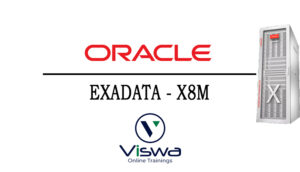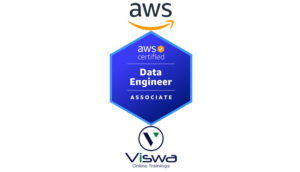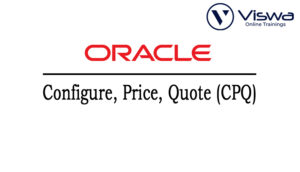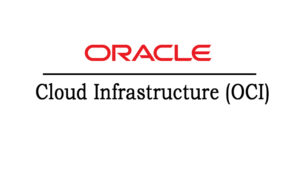Oracle RAC 12c | 19c Certification Training
One of the top providers of online IT training worldwide is VISWA Online Trainings. To assist beginners and working professionals in achieving their career objectives and taking advantage of our best services, We provide a wide range of courses and online training.
Learners : 1080
Duration: 25 Days
About Course
Real Application Clusters is an acronym for them. It is an Oracle DB high-availability solution. Here, utilizing shared discs, two or more nodes are clustered to form a single database. Therefore, the DB side has no single point of failure. A cluster is made up of several connected computers or servers that, to clients and programs, appear to be a single server. You can cluster Oracle databases thanks to Oracle RAC. Enrol today to earn your certification.
Oracle RAC Training Course Syllabus
✔ Explain the principles and purposes of clusters
✔ Describe Cluster hardware best practices
✔ Describe the Oracle Clusterware architecture
✔ Describe how Grid Plug and Play affects Clusterware
✔ Describe the Automatic Storage Management (ASM) architecture
✔ Describe the components of ASM
✔ Perform preinstallation tasks for Grid Infrastructure
✔ Install Grid Infrastructure
✔ Verify the installation
✔ Configure Automatic Storage Management (ASM) disk, groups
✔ Configure ASM volumes
✔ Make the ASM cluster file system
✔ Mount ASM Cluster File System (ACFS) volumes
✔ Display Clusterware management proficiency
✔ Demonstrate Oracle Cluster Registry (OCR) backup and recovery techniques
✔ Manage network settings
✔ Adding and Deleting Oracle Clusterware Homes
✔ Perform the prerequisite steps for extending a cluster
✔ Use addNode.sh to add a node to a cluster
✔ Delete a node from a cluster
✔ Patching Oracle Clusterware
✔ Describe the types of patches and upgrades available
✔ Design for rolling patches and rolling upgrades
✔ Compare software versions with the active version
✔ Install a patchset with the Oracle Universal Installer (OUI) utility
✔ Install a patch with the opatch utility
✔ Describe the high availability components of Oracle Clusterware
✔ Contrast policy-managed and administration-managed databases
✔ Describe the functionality of server pools
✔ Describe application-placement policies
✔ Create an application Virtual IP (VIP)
✔ Manage application resources
✔ Locate Oracle Clusterware log files
✔ Gather all log files using diagcollection.pl
✔ Enable resource debugging
✔ Enable component-level debugging
✔ Enable tracing for Java-based tools
✔ Troubleshoot the Oracle Cluster Registry (OCR) file
✔ Explain and apply (ASM) initialization parameters
✔ Manage ASM instances and associated processes
✔ Monitor ASM using the V$ASM dynamic performance views
✔ Explain the necessity of global resources
✔ Describe global cache coordination
✔ Explain object affinity and dynamic remastering
✔ Install the Oracle database software
✔ Create a cluster database
✔ Perform post-database-creation tasks
✔ Perform a single instance to RAC conversion
✔ Use Enterprise Manager Cluster Database pages
✔ Define redo log files in a RAC environment
✔ Define undo tablespaces in a RAC environment
✔ Start and stop RAC databases and instances
✔ Modify initialization parameters in a RAC environment
✔ The RAC database to use ARCHIVELOG mode and the fast recovery area
✔ RMAN for the RAC environment
✔ Determine RAC-specific tuning components
✔ Tune instance recovery in RAC
✔ Determine RAC-specific wait events, global enqueues, and system statistics
✔ Implement the most common RAC tuning tips
✔ Use the Cluster Database Performance pages
✔ Use the Automatic Workload Repository (AWR) in RAC
✔ Use Automatic Database Diagnostic Monitor (ADDM) in RAC
✔ Configure and manage services in a RAC environment
✔ Use services with client applications
✔ Use services with the Database Resource Manager
✔ Use services with the Scheduler
✔ Configure services aggregation and tracing
✔ Design a Maximum Availability Architecture in your environment
✔ Determine the best RAC and Data Guard topologies for your environment
✔ Configure the Data Guard Broker configuration files in a RAC environment
✔ Identify successful disk I/O strategies
| Live Instructor Based Training With Software |
| Lifetime access and 24×7 support |
| Certification Oriented content |
| Hands-On complete Real-time training |
| Get a certificate on course completion |
| Flexible Schedules |
| Live Recorded Videos Access |
| Study Material Provided |
Oracle RAC Training - Upcoming Batches
7th NOV 2022
8 AM IST
Coming Soon
AM IST
5th NOV 2022
8 AM IST
Coming Soon
AM IST
Don't find suitable time ?
CHOOSE YOUR OWN COMFORTABLE LEARNING EXPERIENCE
Live Virtual Training
-
Schedule your sessions at your comfortable timings.
-
Instructor-led training, Real-time projects
-
Certification Guidance.
Self-Paced Learning
-
Complete set of live-online training sessions recorded videos.
-
Learn technology at your own pace.
-
Get access for lifetime.
Corporate Training
-
Learn As A Full Day Schedule With Discussions, Exercises,
-
Practical Use Cases
-
Design Your Own Syllabus Based
Oracle RAC Online Training FAQ'S
A cluster is referred to a group of independent, but connected servers that behaves as a single system.
Get ahead in your career by learning Oracle RAC through VISWA Online Trainings
A feature of the database system called RAC, or Real Application Cluster, enables the installation of the database over many servers. Oracle RAC ties together numerous servers using Oracle Clusterware to make them function as a single system.
The main elements of an Oracle RAC system are,
- Shared disk system
- Oracle Clusterware
- Cluster Interconnects
- Oracle Kernel Components
Benefit of RAC is that
- Business Continuity and High Availability
- Workload Management with least expense
- Agility and Scalability
- System management and Standardized deployment
The file storage options provided by Oracle Database for Oracle RAC are,
- Automatic Storage Management (ASM)
- OCFS2 and Oracle Cluster File System (OCFS)
- A network file system
Raw devices
Reviews
 Lavanya Posina2024-09-30To get the SAP S4HANA MM training is really worth from VISWA Technologies. I would like to thank you for providing an excellent training.
Lavanya Posina2024-09-30To get the SAP S4HANA MM training is really worth from VISWA Technologies. I would like to thank you for providing an excellent training. Krishna Grandhi2024-09-19I attended PBCS course. Trainer has good knowledge and his explanation is easy to understand. The support team is also supportive during the training period. Overall experience is good.
Krishna Grandhi2024-09-19I attended PBCS course. Trainer has good knowledge and his explanation is easy to understand. The support team is also supportive during the training period. Overall experience is good. Siddhartha Mothukuri2024-09-10Learnt SAP EWM and it has been a really good experience with VISWA Online Trainings and trainer has been excellent in terms of his understanding in business as well as SAP. Thank you
Siddhartha Mothukuri2024-09-10Learnt SAP EWM and it has been a really good experience with VISWA Online Trainings and trainer has been excellent in terms of his understanding in business as well as SAP. Thank you Lakshmiprasanna Annem2024-08-01Thanks chaitanya arrange for sap bw on Hana job support. I will recommend definitely anyone.
Lakshmiprasanna Annem2024-08-01Thanks chaitanya arrange for sap bw on Hana job support. I will recommend definitely anyone. VINOD reddy2024-07-23Amazing Oracle Transportation Management (OTM) training! Definitely recommend.
VINOD reddy2024-07-23Amazing Oracle Transportation Management (OTM) training! Definitely recommend. Arvind P2024-06-28Good institute. Very responsible. As a trainer I got a good experience with them
Arvind P2024-06-28Good institute. Very responsible. As a trainer I got a good experience with them srinivasulu p2024-05-14I have recently enrolled azure cloud security training. There was lots of interaction sessions. It was best online learning platform.
srinivasulu p2024-05-14I have recently enrolled azure cloud security training. There was lots of interaction sessions. It was best online learning platform. Mahendra Reddy2024-05-14I would definitely recommend it anyone looking for generative AI course. This is friendly course thanks phani kumar
Mahendra Reddy2024-05-14I would definitely recommend it anyone looking for generative AI course. This is friendly course thanks phani kumar




